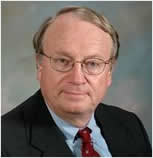Research
RPRC:NCDHR is a Prevention Research Center (PRC) that focuses on Community-Based Participatory Research.

"Little is known about disease trends, underlying attitudes, or health behaviors among Deaf or hard-of-hearing people. This population is woefully understudied and underserved."
-Thomas A. Pearson, MD, MPH, PhD
Founding Director of the Rochester Prevention Research Center
Deaf Weight Wise: A novel randomized clinical trial with Deaf sign language users.
Community-based participatory research informed the design of the Deaf Weight Wise (DWW) trial and intervention. DWW, a community-engaged, culturally appropriate, and language-accessible behavioral weight loss intervention, was successful with Deaf ASL users.
Barnett S, Matthews K, DeWindt L, Sutter E, Samuel-Hodge C, Yang H, Pearson TA; Deaf Weight Wise Study Group. Deaf Weight Wise: A novel randomized clinical trial with Deaf sign language users. Obesity (Silver Spring). 2023 Mar 8. doi: 10.1002/oby.23702.
Link to full publication article
Community Participatory Research With Deaf Sign Language Users to Identify Health Inequities
For the first time ever, a video has been created as an American Sign Language adaptation of a published article from the American Journal of Public Health (AJPH). This article reports findings from the Deaf Health Survey 2008.
Barnett S, Klein JD, Pollard RQ, Samar VJ, Schlehofer D, Starr MJ, Sutter E, Yang H, Pearson TA. (2011). Community participatory research to identify health inequities with deaf sign language users. American Journal of Public Health, 2011 Dec; 101(12):2235-8. Epub 2011 Oct 20.
Deaf Sign Language Users, Health Inequities, and Public Health: Opportunity for Social Justice
Inequities in health and health care have increasingly become an area for concern and action for public health professionals, clinicians, policy makers, and communities. Research has documented inequities in the prevalence of chronic diseases of subpopulations defined by education, income, race and ethnicity, and English proficiency. Justice, a cornerstone of medical ethics, calls for corrective actions (1).
We contend that all communities contain a minority group whose health needs are understudied and underserved. The video is an adaptation of the article featuring dialogue in American Sign Language
Barnett S, McKee M, Smith SR, Pearson TA. (2011). Deaf sign language users, health inequities and public health: Opportunity for social justice. Preventing Chronic Disease 8(2).